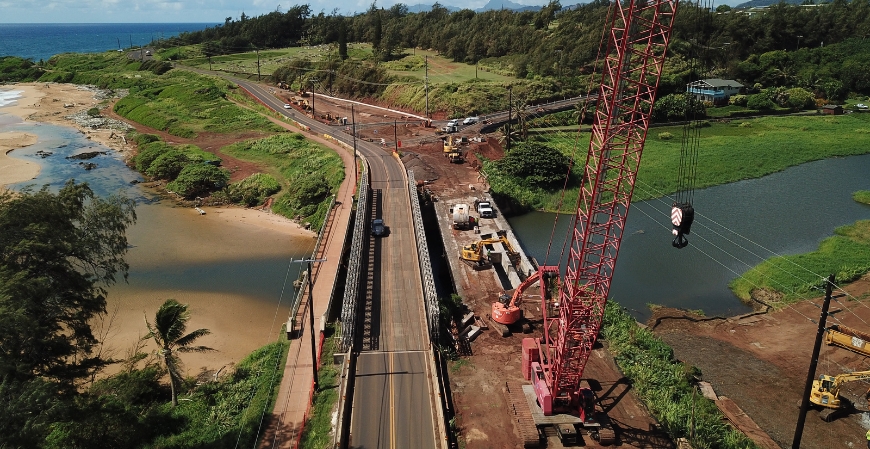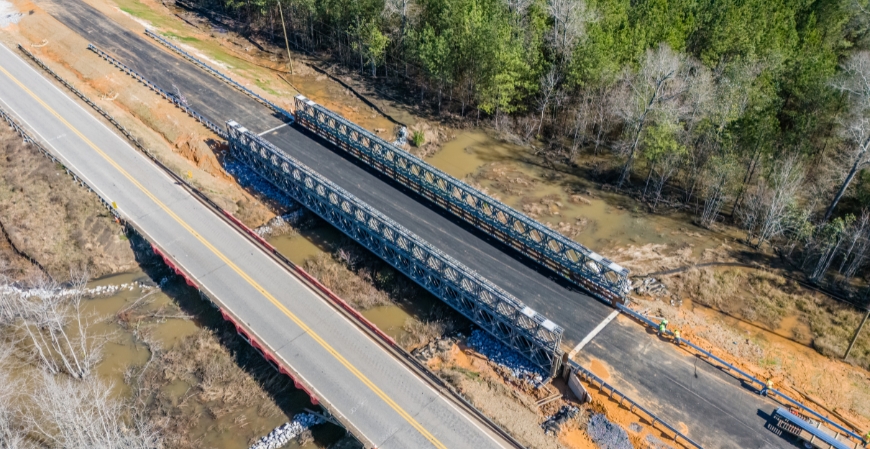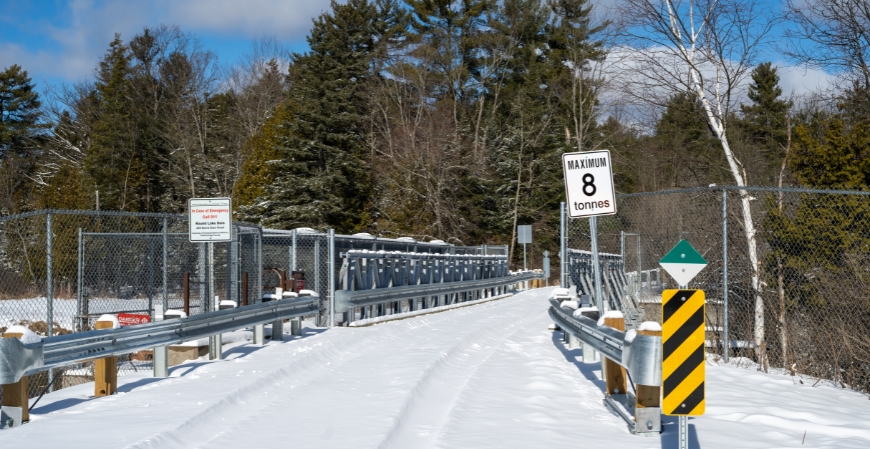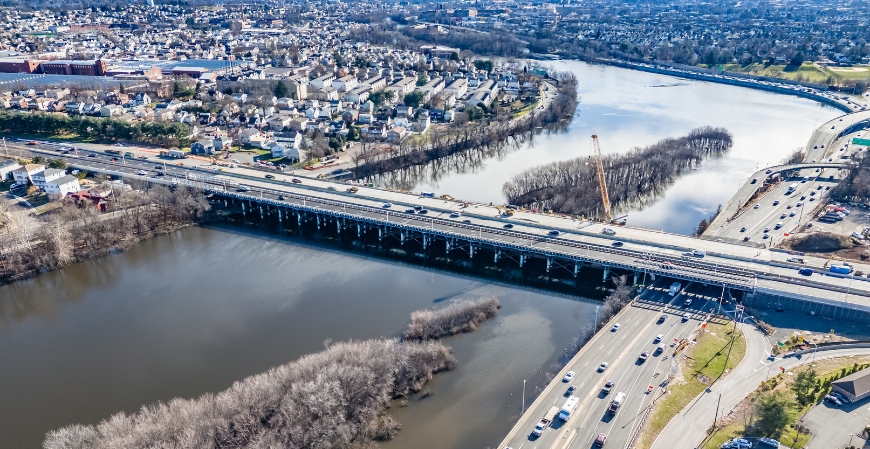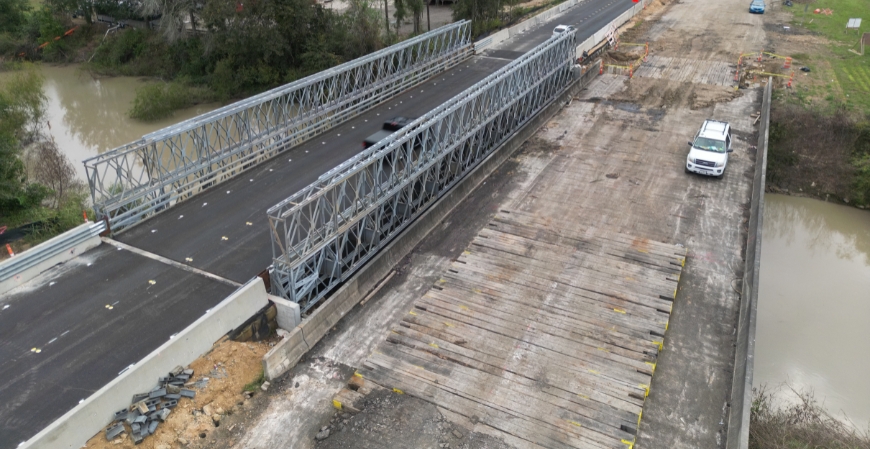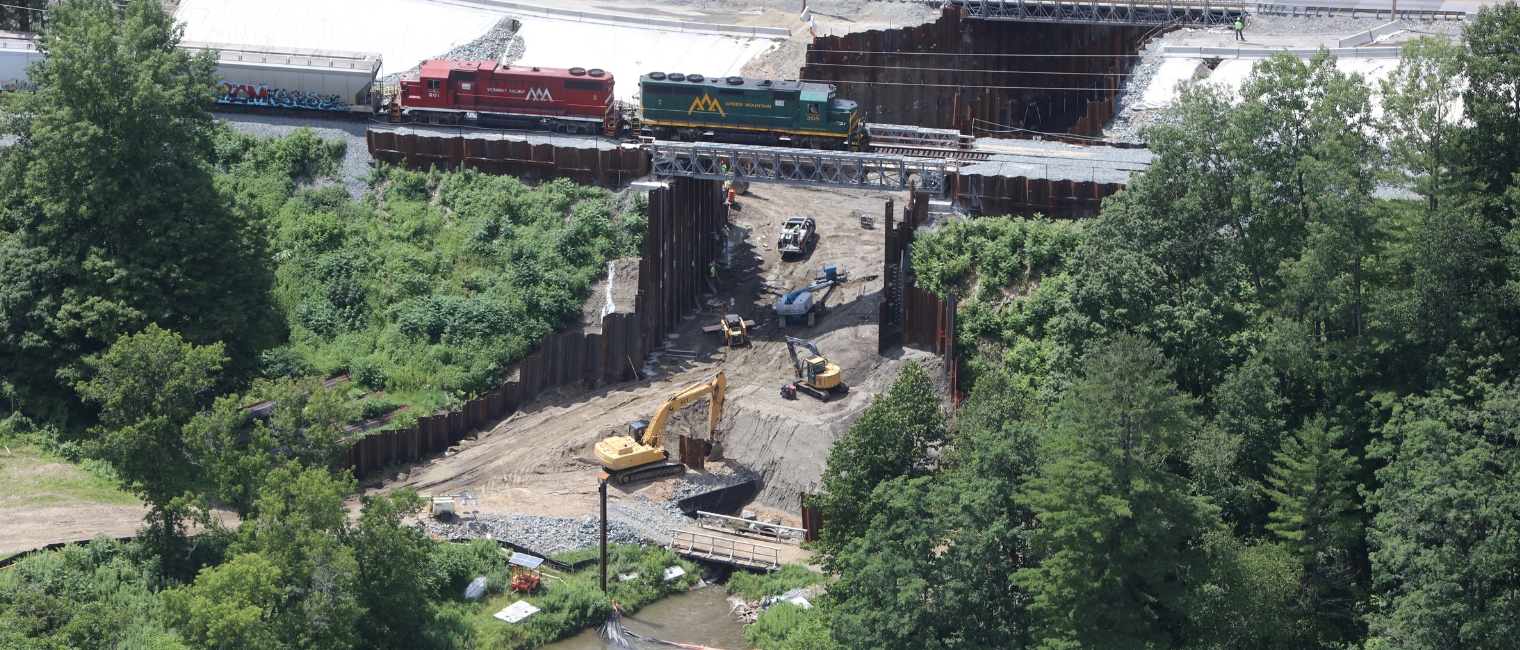
Acrow 700XS panel bridges provide uninterrupted vehicular and rail traffic during the design-build replacement of Manchester Brook culverts
Hydraulically undersized and failure-prone, then further damaged by Hurricane Irene in 2011, the Manchester Brook culverts under US Route 5 and the Washington County Railroad (WACR) were contracted for replacement using the design-build project delivery method. Vermont Agency of Transportation authorized the team of Dubois & King (designers) and Engineers Construction Inc. (ECI) to proceed with the $15.2 million project in May 2014.
Two temporary bridges were required to maintain traffic. The bridges required foundations significantly beyond the footprint of the original or new culverts. The challenging project is complicated by the culverts being up to 80 feet (24.4m) deeper than the road and railroad. Thus the project has required some of the deepest mechanically supported excavations ever in Vermont.
An 80 foot (24.4m) Acrow Panel Bridge was installed in January and February 2015 to maintain two lanes of vehicular traffic on US Route 5 with capacity for 104,000 lb (47,000 kg) trucks. The Acrow span was installed on an off-set alignment so that the new bridge could be built on the original (optimal) alignment.
The 70 foot (21.4m) railroad bridge with Cooper E-80 loading was a more complicated installation because track closure was only allowed on a weekend with no scheduled trains. ECI prepared the temporary abutments underneath the tracks and outside the existing abutments under flag control between trains. The rail bridge was 80% assembled nearby and mounted onto innovative rollers.
On the weekend of the installation, ECI demolished and removed the existing bridge on Thursday night and installed the temporary bearings Friday morning. Then ECI rolled the Acrow span to the edge of the gap. Two large cranes picked and placed the Acrow span onto the bearings on Friday afternoon. On Saturday, ECI crews laid the stringers and rails and made all connections. Sunday evening the bridge was ready for rail traffic. Monday saw the first scheduled train roll over the temporary Acrow span. Bridge removal in 2016 will be a reverse procedure from the installation.
Work continues on the extensive excavation, retaining walls, and cofferdams. The first concrete has been poured. The new culverts will have 25 times the hydraulic capacity of the original culverts and have a 100-year design life.
